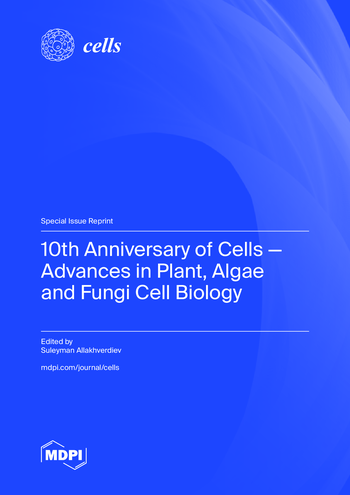p70S6K 作为潜在的抗 COVID-19 靶点:湿式工作台和硅学研究的启示。
摘要
2019 年开始的 SARS-CoV-2 感染引发了全球 COVID-19 大流行。这种感染的特点是病毒和宿主激酶活性显著上升。我们的主要目标是确定一种对 COVID-19 感染和相关的细胞因子风暴现象至关重要的宿主激酶,无论病毒基因如何变异,这种激酶都可能导致 COVID-19 的长期并发症。为此,我们的研究跟踪了 SPIKE 转染后 RAW264.7 巨噬细胞中激酶磷酸化的动态变化。在调查的激酶中,p70S6K(RPS6KB1)在 S418 处的磷酸化增加了 3.5 倍。这一重大变化促使我们利用 p70S6K 与 M2698(PDB:7N93)结合的结构,选择 p70S6K 进行硅学研究。M2698是一种口服Akt/p70S6K双重抑制剂,IC50为1.1 nM,在I期临床试验中表现出精神错乱的副作用,这可能与其与Akt2的相互作用有关。我们的次要目标是通过计算建模和分析,发现 M2698 的小分子类似物,该类似物对 p70S6K 而非 Akt2 有明显的结合偏好。我们项目的硅学部分首先验证了对接算法的预测准确性,然后进行了 OCA 分析,找出了 M2698 上可以修改以提高选择性的特定原子。随后,我们的研究发现了 M2698 的类似物 S34,它与 p70S6K 的对接得分高于 Akt2。为了进一步评估 S34 与 p70S6K 和 Akt2 的蛋白配体(PL)复合物的稳定性,我们进行了 MD 模拟。这些模拟表明,S34 平均与 p70S6K 形成两个氢键相互作用,而与 Akt2 只形成一个氢键相互作用。这种氢键相互作用的差异很可能导致观察到的 S34-Akt2 复合物的均方根偏差(RMSD)较大,为 0.3 nm,而 S34-p70S6K 复合物的均方根偏差为 0.1 nm。此外,我们还计算了自由结合能,以预测 S34 与 p70S6K 和 Akt2 的结合相互作用强度,结果显示 S34 在 p70S6K 结合口袋中的结合亲和力比在 Akt2 结合口袋中的结合亲和力高出约 2 倍。这些观察结果可能表明,S34-p70S6K 复合物比 S34-Akt2 复合物更稳定。我们的工作重点是确定宿主激酶靶点并预测新型小分子的结合亲和力,以加速开发有效的治疗方法。湿法研究结果特别强调了 p70S6K 是一个引人注目的抗 COVID-19 靶点。与此同时,我们的硅学研究还发现了一种名为 S34 的近似物,从而解决了与 M2698 相关的已知脱靶效应。总之,这项研究提出了新颖而有趣的发现,通过进一步研究,有可能将其应用于临床。The onset of SARS-CoV-2 infection in 2019 sparked a global COVID-19 pandemic. This infection is marked by a significant rise in both viral and host kinase activity. Our primary objective was to identify a pivotal host kinase essential for COVID-19 infection and the associated phenomenon of the cytokine storm, which may lead to long-term COVID-19 complications irrespective of viral genetic variations. To achieve this, our study tracked kinase phosphorylation dynamics in RAW264.7 macrophages following SPIKE transfection over time. Among the kinases surveyed, p70S6K (RPS6KB1) exhibited a 3.5-fold increase in phosphorylation at S418. This significant change prompted the selection of p70S6K for in silico investigation, utilizing its structure bound to M2698 (PDB: 7N93). M2698, an oral dual Akt/p70S6K inhibitor with an IC50 of 1.1 nM, exhibited psychosis side effects in phase I clinical trials, potentially linked to its interaction with Akt2. Our secondary objective was to discover a small-molecule analogue of M2698 that exhibits a distinct binding preference for p70S6K over Akt2 through computational modeling and analysis. The in silico part of our project began with validating the prediction accuracy of the docking algorithm, followed by an OCA analysis pinpointing specific atoms on M2698 that could be modified to enhance selectivity. Subsequently, our investigation led to the identification of an analog of M2698, designated as S34, that showed a superior docking score towards p70S6K compared to Akt2. To further assess the stability of S34 in its protein-ligand (PL) complexes with p70S6K and Akt2, MD simulations were conducted. These simulations suggest that S34, on average, forms two hydrogen bond interactions with p70S6K, whereas it only forms one hydrogen bond interaction with Akt2. This difference in hydrogen bond interactions likely contributed to the observed larger root mean square deviation (RMSD) of 0.3 nm in the S34-Akt2 complex, compared to 0.1 nm in the S34-p70S6K complex. Additionally, we calculated free binding energy to predict the strength of the binding interactions of S34 to p70S6K and Akt2, which showed ~2-fold favorable binding affinity of S34 in the p70S6K binding pocket compared to that in the Akt2 binding pocket. These observations may suggest that the S34-p70S6K complex is more stable than the S34-Akt2 complex. Our work focused on identifying a host kinase target and predicting the binding affinity of a novel small molecule to accelerate the development of effective treatments. The wet bench results specifically highlight p70S6K as a compelling anti-COVID-19 target. Meanwhile, our in silico investigations address the known off-target effects associated with M2698 by identifying a close analog called S34. In conclusion, this study presents novel and intriguing findings that could potentially lead to clinical applications with further investigations.

 求助内容:
求助内容: 应助结果提醒方式:
应助结果提醒方式:


